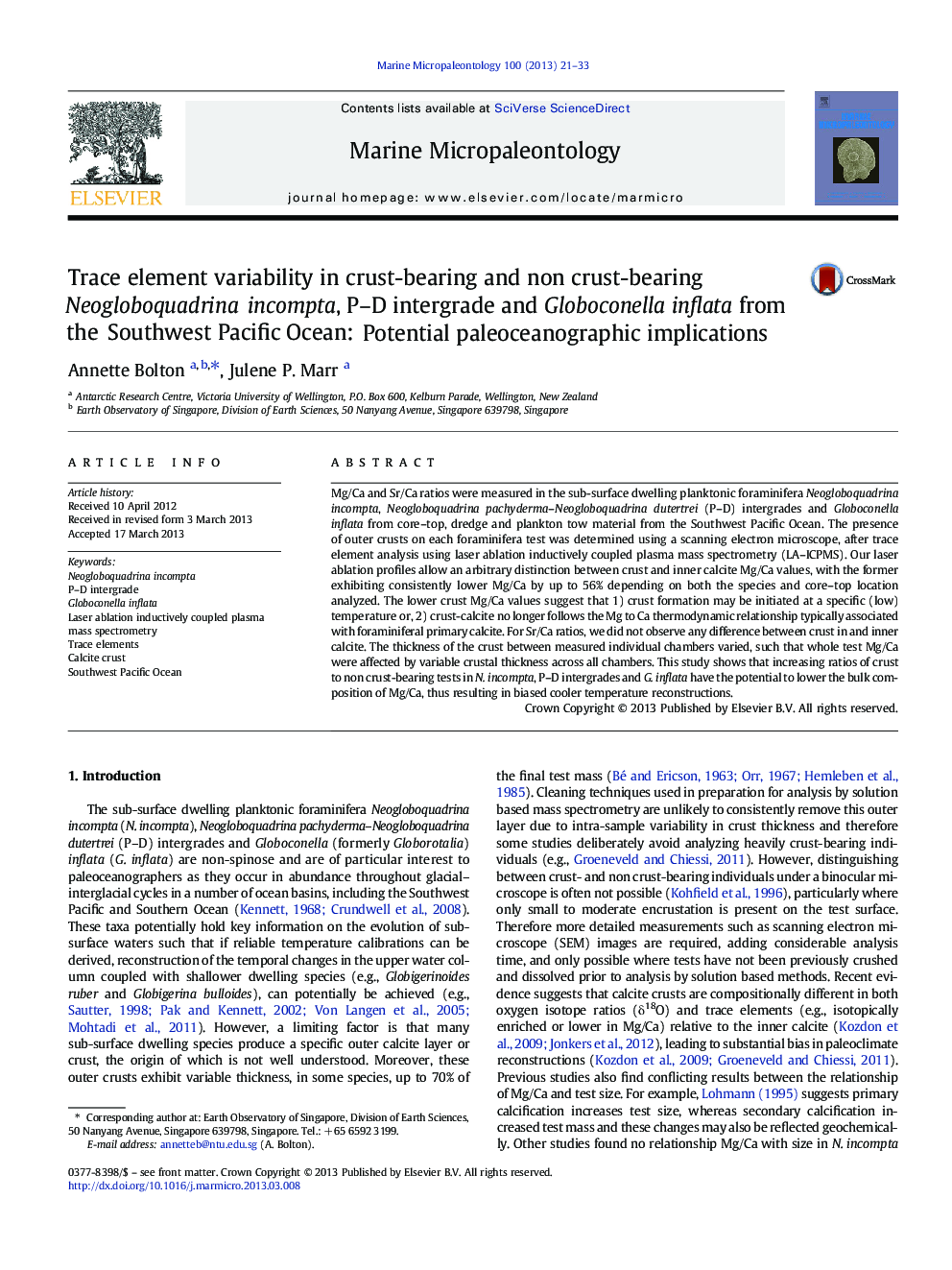| Article ID | Journal | Published Year | Pages | File Type |
|---|---|---|---|---|
| 4748932 | Marine Micropaleontology | 2013 | 13 Pages |
•Crust-bearing tests show consistently lower Mg/Ca ratios than tests without crusts.•Crust formation may be initiated at a specific (low) temperature.•Variable crust thickness contributes to overall lowering of bulk Mg/Ca.
Mg/Ca and Sr/Ca ratios were measured in the sub-surface dwelling planktonic foraminifera Neogloboquadrina incompta, Neogloboquadrina pachyderma–Neogloboquadrina dutertrei (P–D) intergrades and Globoconella inflata from core–top, dredge and plankton tow material from the Southwest Pacific Ocean. The presence of outer crusts on each foraminifera test was determined using a scanning electron microscope, after trace element analysis using laser ablation inductively coupled plasma mass spectrometry (LA–ICPMS). Our laser ablation profiles allow an arbitrary distinction between crust and inner calcite Mg/Ca values, with the former exhibiting consistently lower Mg/Ca by up to 56% depending on both the species and core–top location analyzed. The lower crust Mg/Ca values suggest that 1) crust formation may be initiated at a specific (low) temperature or, 2) crust-calcite no longer follows the Mg to Ca thermodynamic relationship typically associated with foraminiferal primary calcite. For Sr/Ca ratios, we did not observe any difference between crust in and inner calcite. The thickness of the crust between measured individual chambers varied, such that whole test Mg/Ca were affected by variable crustal thickness across all chambers. This study shows that increasing ratios of crust to non crust-bearing tests in N. incompta, P–D intergrades and G. inflata have the potential to lower the bulk composition of Mg/Ca, thus resulting in biased cooler temperature reconstructions.
